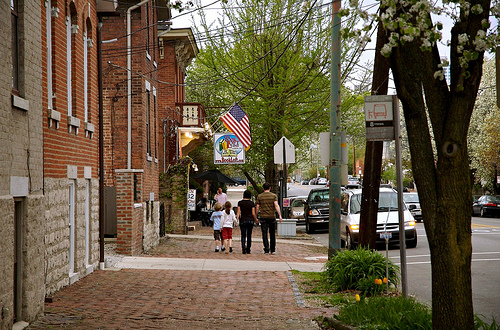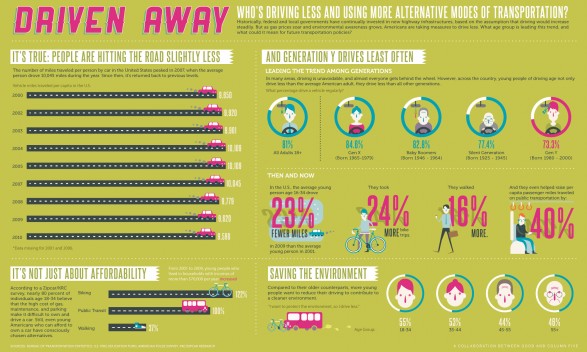Americans aren't happy with auto dependence
May 29, 2013
Written By Malcolm Kenton
Train advocates hear it all the time: "Americans like their cars too much, and our communities are too spread out, for passenger trains to really be viable here," or some variation on that statement. But those who make such sweeping declarations likely aren't paying close enough attention to what's happening in most of the country's metropolitan regions, and are unaware of the increasingly evident trends in Americans' travel habits as evidenced by most data gathered over the past decade.

The Urban Land Institute's "America in 2013" survey reveals, among other findings that contradict the stereotypical view of "the American dream," that 61% of those surveyed prefer a shorter commute, even if it means having a smaller home, and 53% want to live close to shops, restaurants and offices, while 51% prioritize the availability of public transportation.
Respondents ranked their community's walkability third in importance, behind only neighborhood safety and quality of public schools. 22% of respondents walk to a destination nearly every day. And 62% of those planning to move in the next five years say they'd prefer to live in a mixed-use community, where shopping, recreation, employment and education are close by.The Urban Land Institute's "America in 2013" survey reveals, among other findings that contradict the stereotypical view of "the American dream," that 61% of those surveyed prefer a shorter commute, even if it means having a smaller home, and 53% want to live close to shops, restaurants and offices, while 51% prioritize the availability of public transportation.Train advocates hear it all the time: "Americans like their cars too much, and our communities are too spread out, for passenger trains to really be viable here," or some variation on that statement. But those who make such sweeping declarations likely aren't paying close enough attention to what's happening in most of the country's metropolitan regions, and are unaware of the increasingly evident trends in Americans' travel habits as evidenced by most data gathered over the past decade.
The number of miles each American drives each year peaked in 2004, and has slowly decreased each year since, according the U.S. Public Interest Research Group (US PIRG) Education Fund in a recent report. This despite a growing population. The trend is partially attributed to the dramatic shift in preference away from driving amongst Millennials (those currently between the ages of 16 and 34). Their miles driven dropped a whole 23% from 2001 to 2009 as many chose to live in walkable neighborhoods and opted for public transportation, including trains.
The "Driving Boom" is over, says US PIRG. Even the most conservative scenarios do not show driving regaining its 2004 peak. This is something for policy makers to consider, as the infrastructure that is built today will largely serve the younger generation as they become the nation's leaders. Assuming these trends continue, it becomes even clearer that we can't afford to delay investment in an infrastructure that supports a less car-dependent lifestyle--including trains for fast, safe, convenient trips across town or between cities.
Here's a handy infographic from Visual.ly that lays out these recent trends. Please share it with your friends and family:


